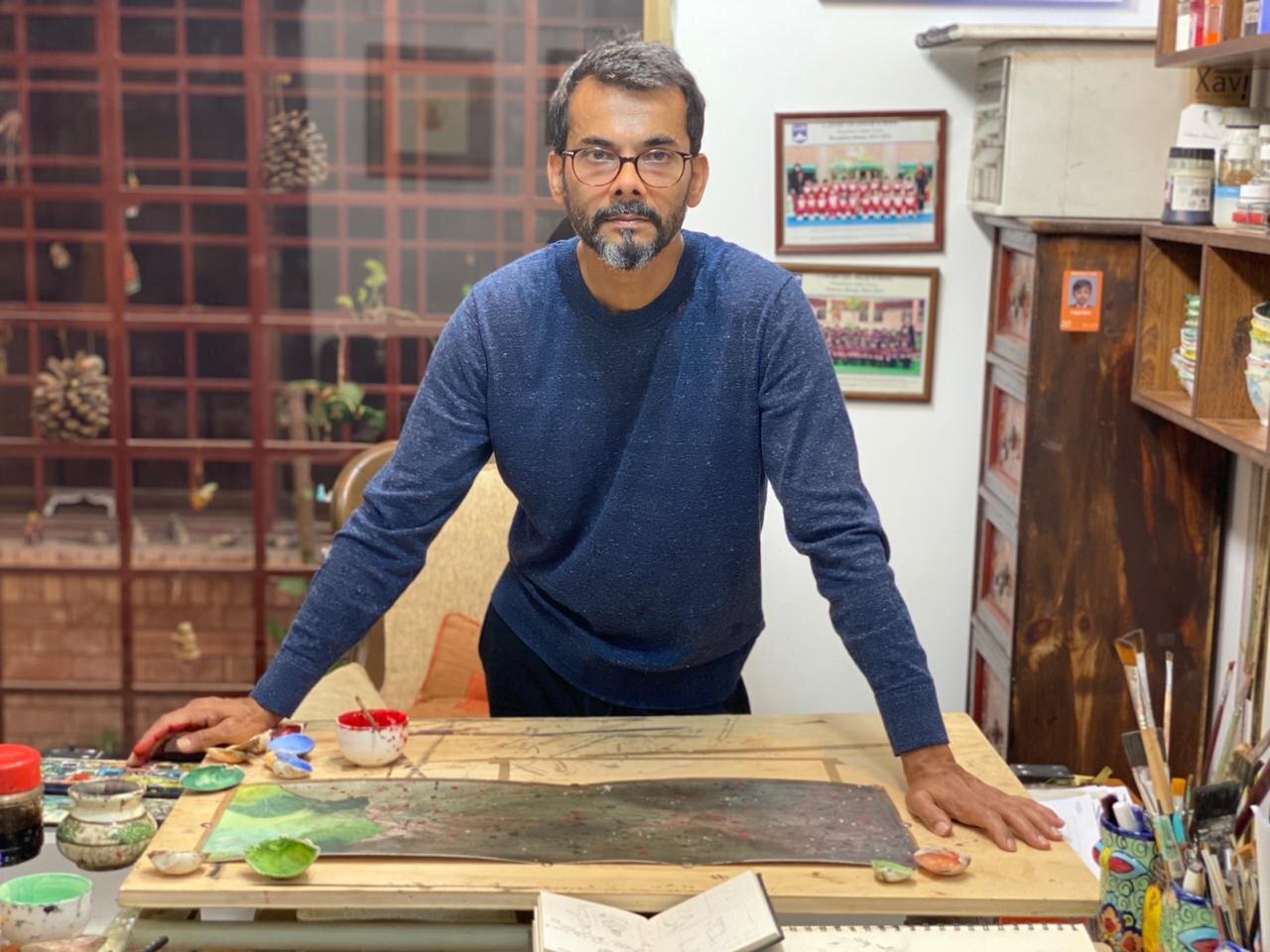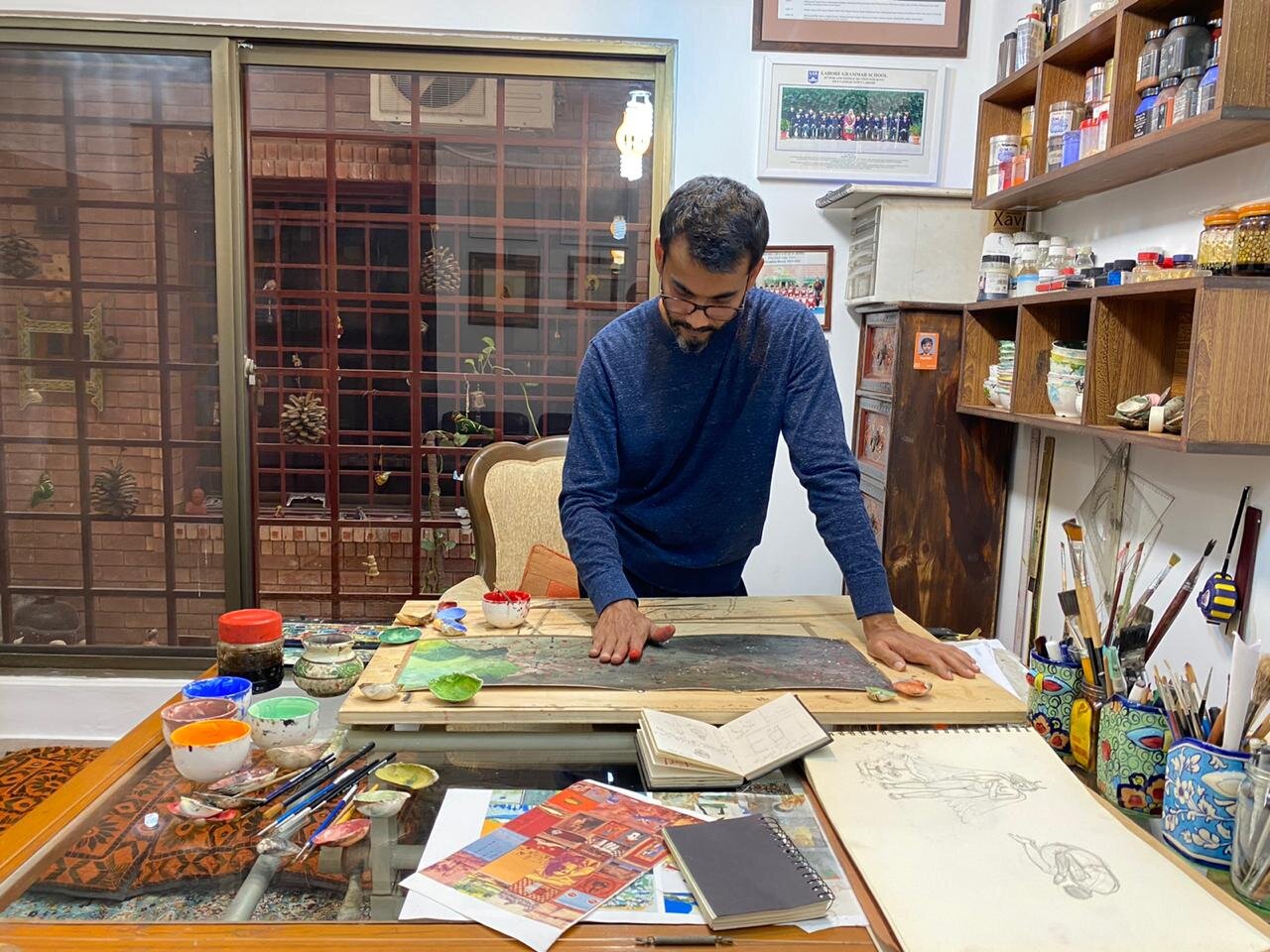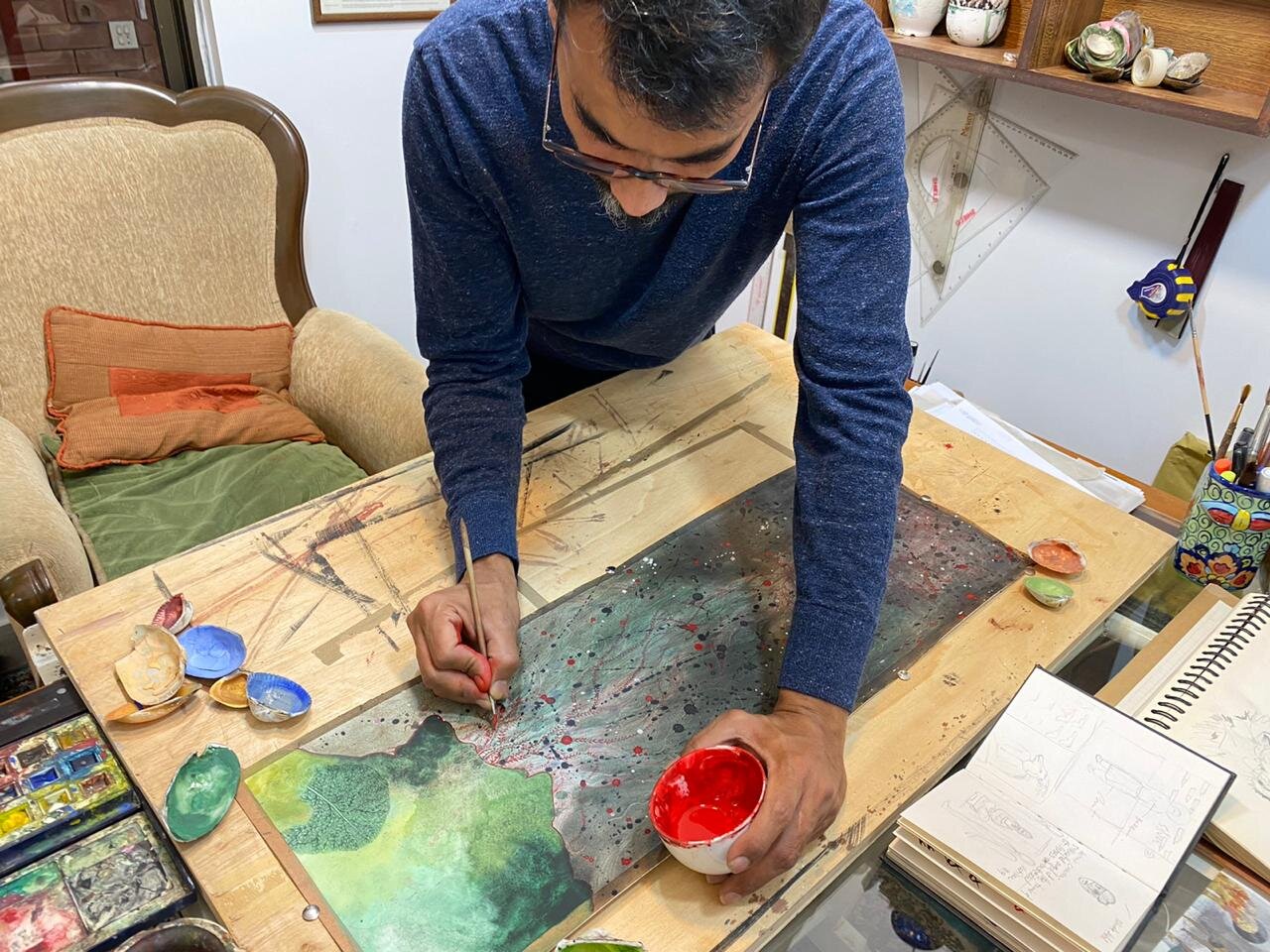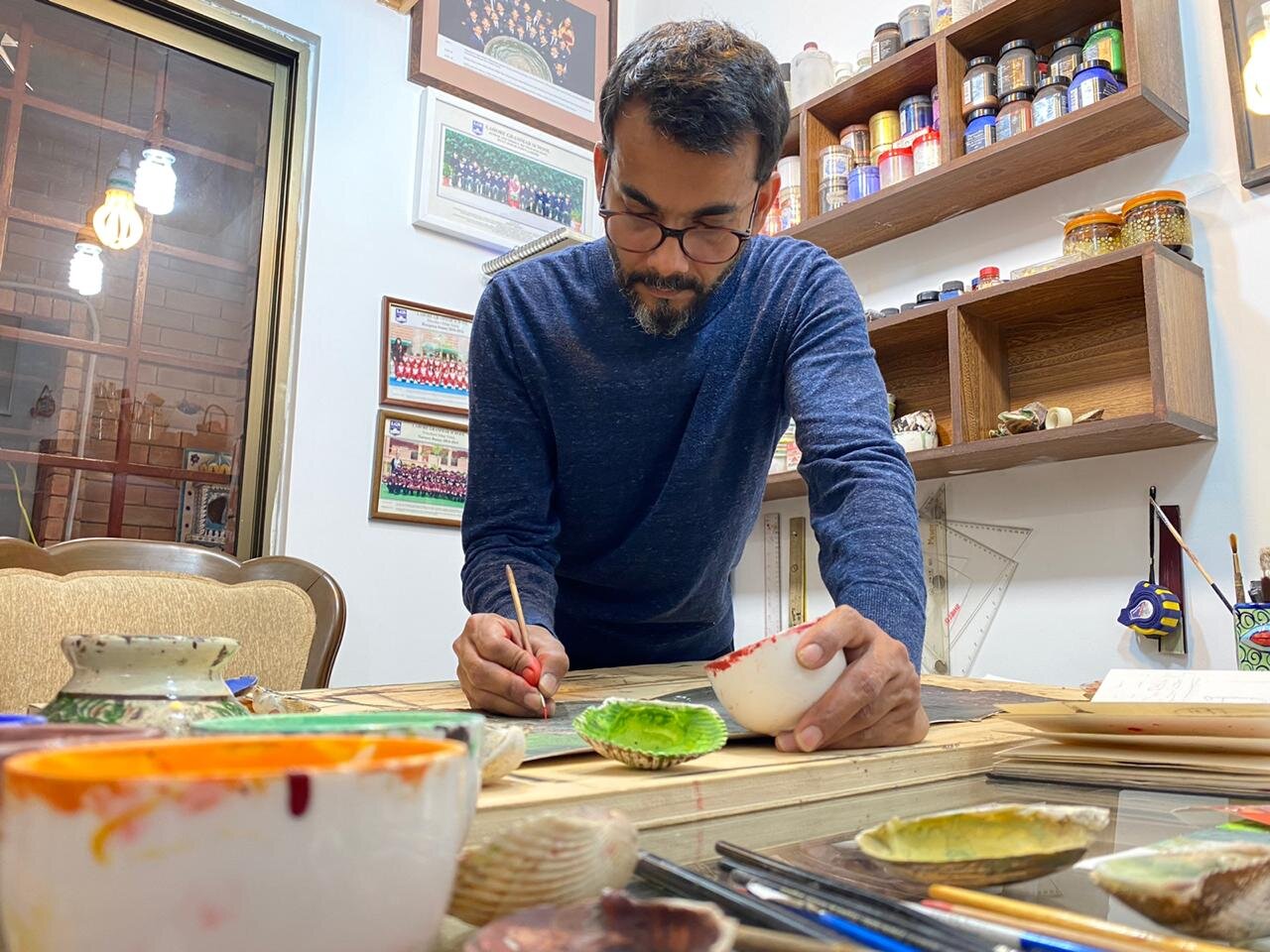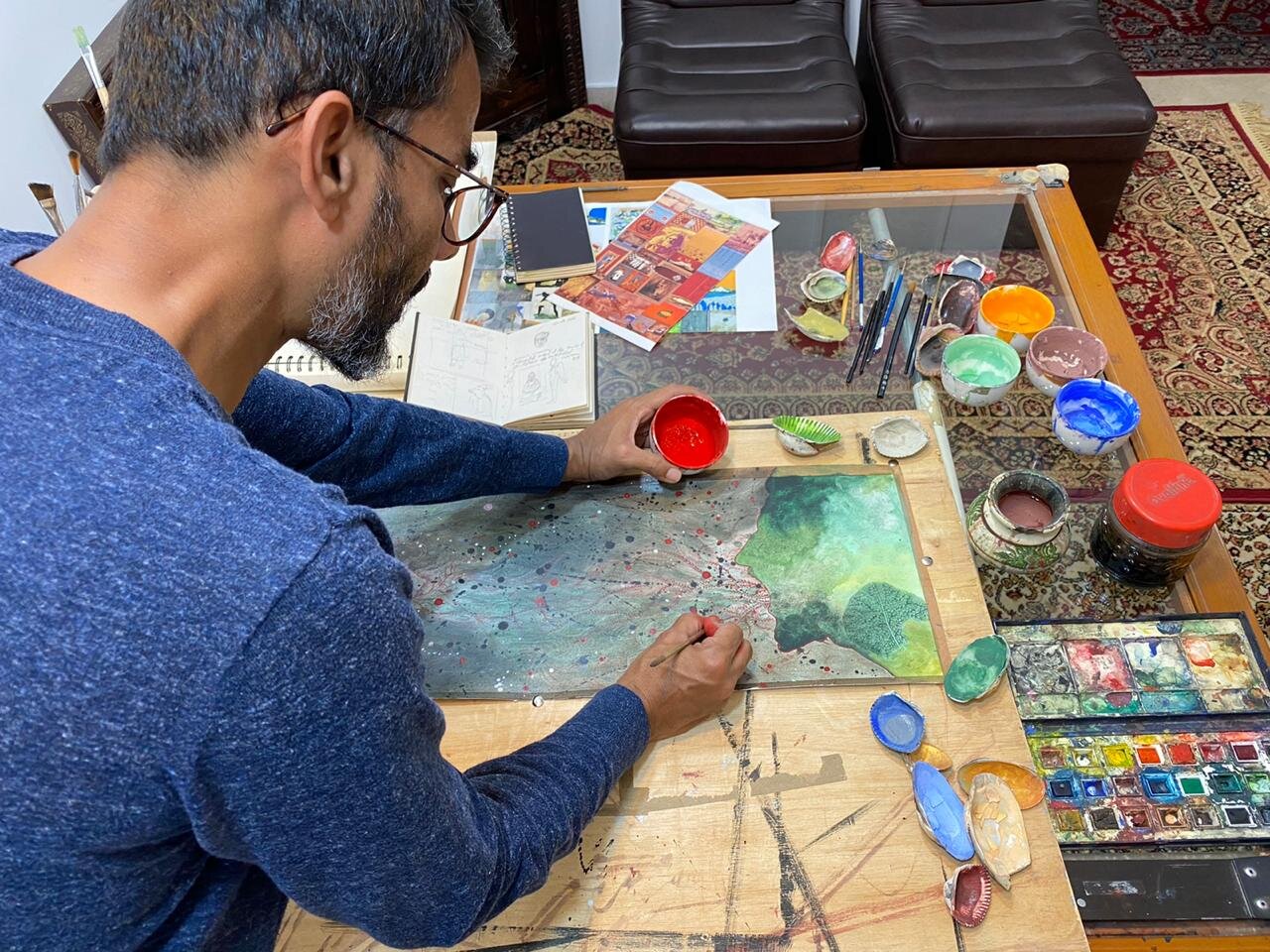Waseem Ahmed
neo-miniaturist waseem ahmed takes a pop at icon Marilyn Monroe
We continue our #SAIatHome series highlighting artists from our exhibition Old Tradition, New Narratives: South Asian Miniatures with Neo-miniaturist Waseem Ahmed. Ahmed is known for his nuanced and witty artworks. In his Krishna Series, the artist depicts the notorious cultural pop icon Marilyn Monroe next to the Hindu God Krishna. Typical of the Neo-miniaturists to juxtapose two figures from unrelated cultures and time periods, Ahmed initiates a dialogue between tradition and modernity by symbolizing an East-West interaction through these two figures.
Based on the love story of Krishna and the gopi (cowgirl) Radha from Hindu mythology and frequently the subject of historical paintings, Ahmed has subverted the traditional iconography and depicted the smitten God, who has discarded his flute and is gazing at the modern “goddess” Marilyn Monroe.
A graduate of the National College of the Arts in Lahore, Pakistan, Ahmed currently lives and works in Lahore. His works often reinterpret the female body from an Eastern lens, presenting an inverse narrative. Much like the Orientalist painters of the 19th and 20th century who frequently used veiled Eastern females to symbolize mysticism and desire, Ahmed, in a similar context, has changed the object of desire to the celebrated nudes of Western art history in an act of postcolonial defiance.
“When I draw female bodies,
I try to highlight feminine issues in my region of the world and the effects
on both genders.”
In your work from the Krishna Series in the current exhibition at SAI, you have depicted the famous pop culture icon Marilyn Monroe differently than the way audiences are used to seeing her. Can you speak more about the use of Marilyn Monroe in your paintings and the message you were trying to convey? What made you choose Marilyn Monroe to make your point?
My use of Krishna in the Krishna Series comes from my time at the National College of Arts. While we were being taught miniature painting techniques Krishna was a common figure in traditional Indian miniature paintings we saw. I also found that there were many love stories of Krishna depicted in the Raga Mala paintings, which is where my inspiration comes from. I used Marilyn Monroe in juxtaposition with Krishna as she is the modern icon of beauty. I wanted to recreate the story of the God of love with a contemporary Western symbol of beauty.
Can you explain your use of a veiled nude female image/body in your paintings that are reminiscent of the Orientalist works depicting veiled “Eastern” women?
This work is a comment on the portrayals of women by the media, both in the East as well as the West, and the effect that these reports have on the biased opinions of the general public towards women. People in Western countries presume that women in the East are completely veiled while people in the East assume that women in the West are mostly uncovered. In my Burka Series by placing the burka (veil) on a nude from an old Western masters painting, I wanted to highlight that biased view that has also been promoted by the media.
Can you talk more about the juxtaposition of the female figure with the apple in your painting Untitled (Apple)? Is there a message for the viewer in that work?
While painting I often take inspiration from the works of old masters and religious, historical and mythological stories. This work was inspired by the story of Adam and Eve.
Does the medium of miniature painting allow you more freedom or does it restrict you in communicating your message?
In other styles of painting there are rules of perspective that have to be followed, while in miniature painting there is the freedom to express much more than there is in actual reality. It is because of this freedom that I get to portray really serious and painful issues of the present time, in a subtle and serene way. When viewed from a distance the image may be interpreted differently from when it is seen up close and the true meaning of the work unfolds. Miniature painting allows me more freedom in communicating my messages to my audience.
Lastly, what do you enjoy most about being a faculty at the NCA? What is your best memory from your days as a student there?
My best memory from time as a student at NCA is when I started learning miniature painting after finishing my BFA from Sindh University. Learning miniature painting completely changed my perspective of how I view my surroundings. I could paint what I saw and what I was painting, I could see around me. Teaching miniature painting is in itself a whole new learning experience. One gets to learn so much from student’s problems and in helping them find solutions to their dilemmas.






